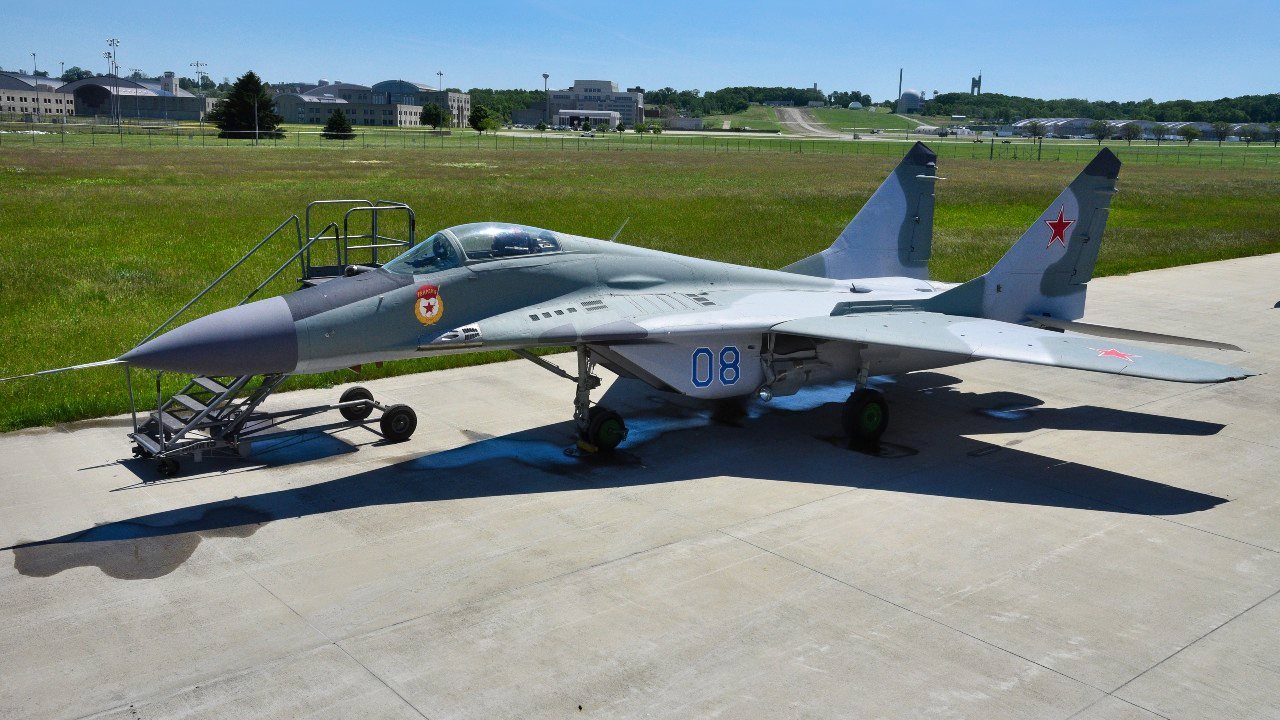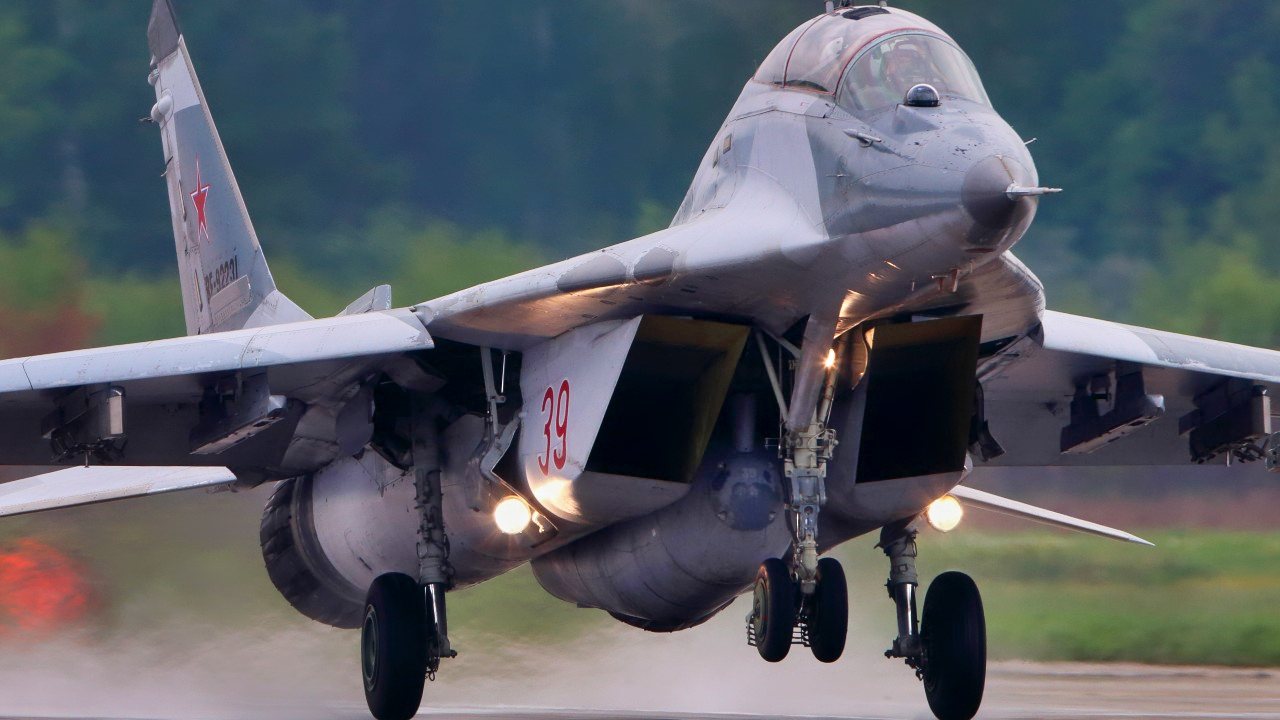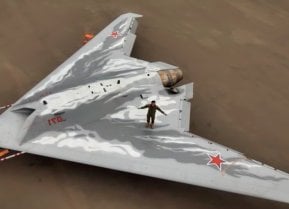Russia's MiG-29 Fighter Was the Warplane NATO Feared (Not Anymore)
Many experts during the Cold War thought the Soviet-designed MiG-29 "Fulcrum" 4th Generation fighter jet should've been the rough equal of the U.S. Air Force McDonnell-Douglas F-15 Eagle and F-16 Fighting Falcon in air-to-air combat.
Before the onsite of hostilities in Operation Desert Storm in 1991, quite a few pundits and prognosticators stated that, on-paper at least, the Soviet-designed MiG-29 "Fulcrum" 4th Generation fighter jet should've been the rough equal of the U.S. Air Force McDonnell-Douglas F-15 Eagle and F-16 Fighting Falcon in air-to-air combat.

Well, that theory didn't work out so well in reality, either in the skies of Iraq or in the skies over Serbia and Kosovo eight years later during Operation Allied Force.
However, that doesn't necessarily mean that the MiG-29 is an inherently flawed design.
If anything, the ongoing war (or "special military operation" as Vladimir Putin euphemistically chooses to officially label it) between Russia and Ukraine has given the Fulcrum a new lease on life (and moments in the media spotlight).
Let's take a closer look at the history of the MiG-29.
Fostering the MiG-29 Fulcrum
The MiG-29 Fulcrum made her maiden flight on 6 October 1977. (To provide readers with a sense of historical perspective, Elvis had died less than two months prior, and in turn Star Wars: Episode IV - A New Hope had made its box office debut three months prior to that cataclysmic cultural event)
From there, the warbird went into operational service with the Rodina ("Motherland") in 1982, the year after Ronald Reagan took office as American POTUS and initiated his agenda of rolling back the Soviet Union.
Most aviation experts agree that the MiG-29 was indeed explicitly designed to counter the aforementioned F-16 and F-16. However, the anonymous author of GlobalSecurity.org's page on the warbird takes a contrarian perspective:"The MiG-29 was not created for close air combat, and was used by Soviet bloc Air Forces as an interceptor. The plane was designed to reach the required altitude, develop supersonic speed, shoot missiles and return home,” he stressed. And he noted that the suspension of additional tanks limited the capabilities of the aircraft - with them it could not develop supersonic speed."
That anonymous author doesn't specify who exactly is the "he" in question, and moreover, I can't help but wonder if that mystery interviewee is actually describing the MiG-25 Foxbat. But I digress.
In any event, the Fulcrum measures out at 17.32 meters (56 feet 10 inches) in length, 4.73 meters (15 feet 6 inches) in height, with a wingspan of 11.36 meters (37 feet 3 inches), and a maximum takeoff weight 0f 18,000 kilogram (39,683 pounds). The MiG-29 tears through the air at a max airspeed of Mach 2.25 (2,400 kph/ 1,500 mph/1,300 knots). The armament consists of a single Gryazev-Shipurov GSh-30-1 30mm autocannon with 150 rounds, plus hardpoints with a capacity for 4,000 kilograms' (8,800 pounds) worth of bombs or missiles such as the AA-8 Aphid, AA-10 Alamo, AA-11 Archer, AA-12 Adder.
Fightin' MiG-29 Fulcrum…or Failing & Flailing Fulcrum?
As I indicated in the opening paragraph of this article, the MiG-29's impressive on-paper characteristics haven't exactly translated into stellar performance in real-world air-to-air combat.

The MiGFlug website, which did an impressive job of tallying the combat statistics for all military aircraft currently in use, but has yet to update its numbers with figures from the current Russo-Ukrainian War, credits the Fulcrum with 6 air-to-air kills versus 18 losses, equating to a decidedly underwhelming 1:3 kill-to-loss ratio. Moreover, two of the Fulcrum's kills were obtained by Fidel Castro's Communist Cuban pilots against unarmed Cessna 337s during the infamous "Brothers to the Rescue" atrocity of 1996.
Going back to the subject of the MiG-29's performance in Operation Desert Storm and Operation Allied Force, five of the Iraqi-owned jets and six of the Serbian-owned birds, respectively, were downed with no kills garnered in return. At least one Iraqi Air Force (IqAF) pilot, Naqib (Captain) Jameel Sayhood, claimed to have shot down a Royal Air Force (RAF) Tornado fighter-bomber, but Western sources actually attribute that Tornado kill to Iraqi SAMs.
In the case of the Serbian MiG-29s, one was lost to friendly fire, whilst one was shot down by a USAF F-16, one by a Royal Netherlands Air Force (RNLAF) F-16, and three by USAF F-15s. One of these Eagle drivers who killed a Serbian Fulcrum was the living legend Col. Cesar Rodriguez, whose three total aerial victories are the most any U.S. military aviator has achieved since the Vietnam War.
Since then, during the Ethiopian-Eritrean War of 1998-2000, Eritrean MiG-29 drivers managed to shoot down three Ethiopian MiG-21 Fishbeds. Most recently and significantly, on 27 May 2022, a Ukrainian Air Force MiG-29 pilot shot down a Russian Su-35 "Flanker-E." But what happens as we get deeper into the Ukraine war?
Stay tuned, dear readers.
Christian D. Orr is a former Air Force officer, Federal law enforcement officer, and private military contractor (with assignments worked in Iraq, the United Arab Emirates, Kosovo, Japan, Germany, and the Pentagon). Chris holds a B.A. in International Relations from the University of Southern California (USC) and an M.A. in Intelligence Studies (concentration in Terrorism Studies) from American Military University (AMU). He has also been published in The Daily Torch and The Journal of Intelligence and Cyber Security. Last but not least, he is a Companion of the Order of the Naval Order of the United States (NOUS).


